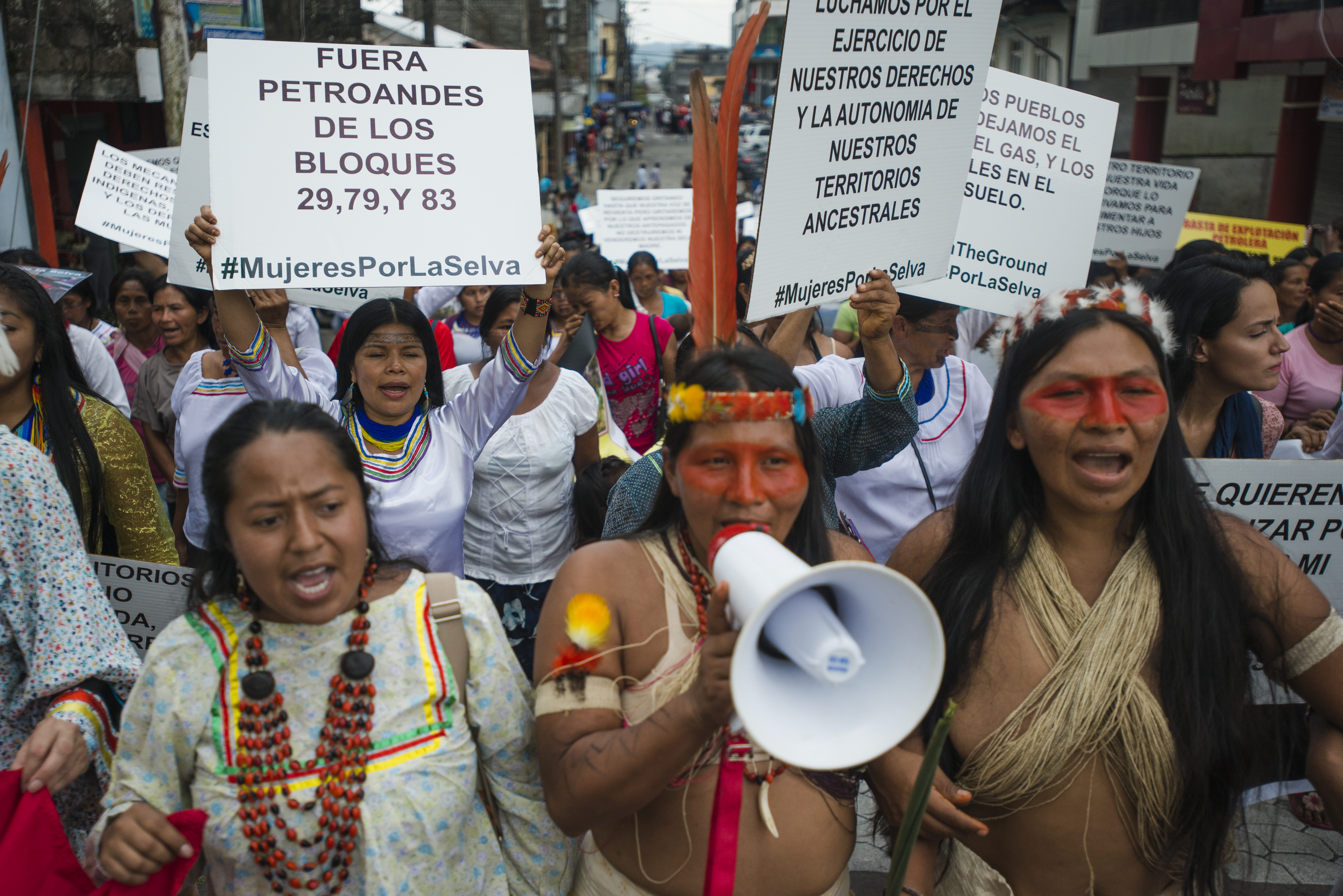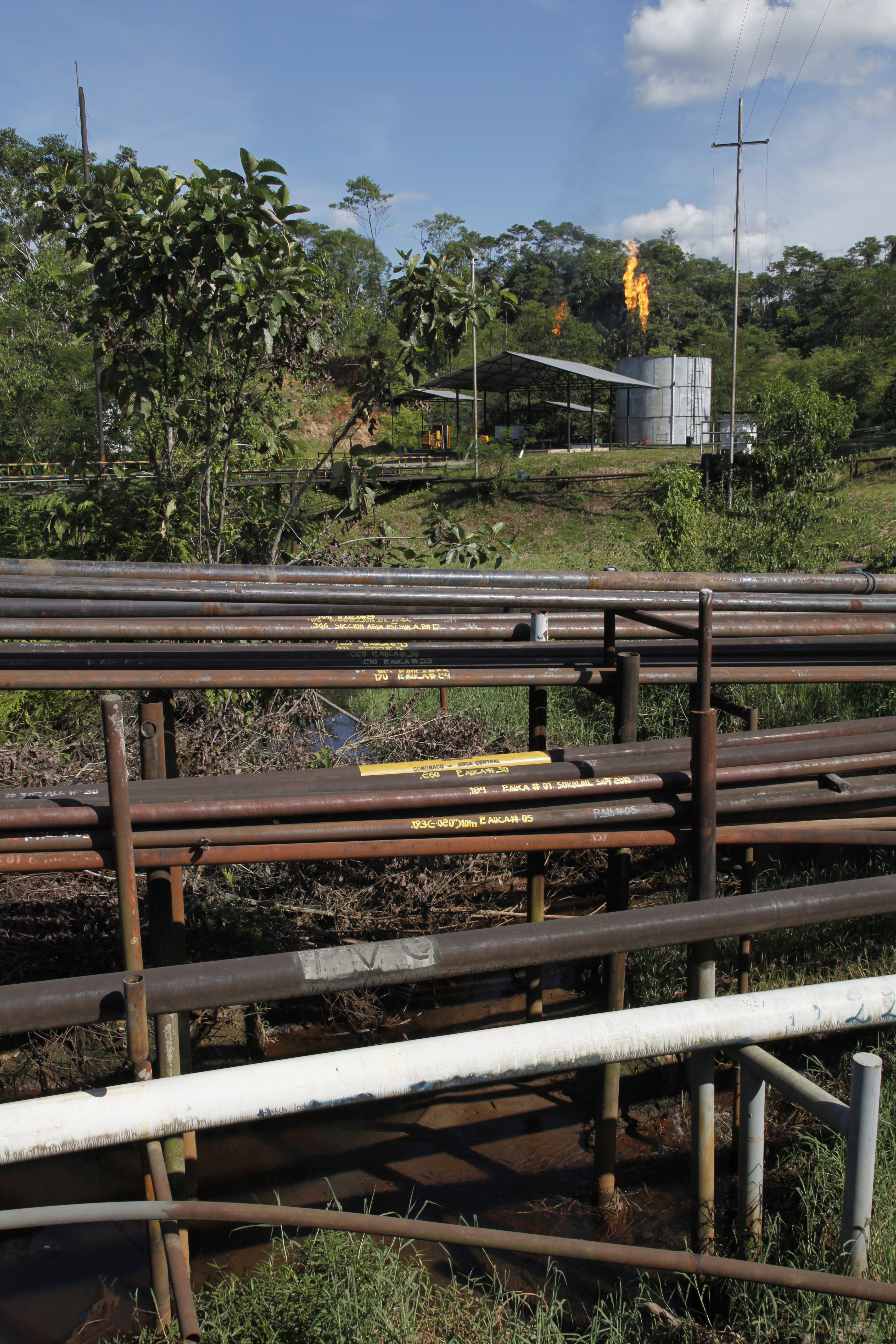1. Lago Agrio – Ecuador’s Chernobyl
On July 10 2018, two courts, over 2,800 miles apart, came to diametrically opposite conclusions about one of the worst cases of environmental pollution in the twentieth century. In Quito, Ecuador, the Constitutional Court upheld a ruling that the giant US corporation Chevron Oil was responsible for the catastrophic pollution of a vast area of Amazon rain forest between 1971 and 1992. In New York, the state Supreme Court found that Steve Donziger, one of the principal US lawyers representing those affected by the pollution, was guilty of perverting the course of justice in this case, and debarred him indefinitely from practising as a lawyer. Chevron hailed this as a victory. “We’re going to fight this until hell freezes over … And then we’ll fight it out on the ice”, said a Chevron spokesman in 2009. The company has done just that. Meanwhile, the Lago Agrio region of Ecuador remains severely polluted, the victims remain uncompensated, and environmental defenders throughout the world must contemplate the terrifying consequences of taking on companies and governments responsible for blatant crimes against the natural world. In this, the first of three articles, we examine the pollution at Lago Agrio and the tangled skein of corporate responsibility.The 1,700 square miles of rainforest in the Lago Agrio region of Ecuador has been described as ‘one of the world’s most contaminated industrial sites’—Ecuador’s ‘Chernobyl’. Between 1971 and 1992, 16 billion gallons of toxic oil waste were dumped onto the land of indigenous communities. This caused contamination of water sources that led to the deaths of hundreds of settlers and indigenous people. Tens of thousands have been permanently affected by what the Amazon Defense Coalition (ADC) calls ‘one of the worst public health catastrophes in history’. Video: Telesur, 2016 The town of Lago Agrio, in the province of Sucumbios, was founded by Texaco, and named after Sour Lake, the birthplace of Texaco in Texas. Sucumbios is in the eastern part of Ecuador, known as the Oriente, where tropical forest covers 100,000 km2 at the headwaters of the Amazon river. This is one of the most biodiverse places on earth and is the home of the indigenous communities of the Cofán, Siona, Secoya, Kichwa and Huaorani people, many of whom avoided contact with colonizers for 500 years and lived mainly in voluntary isolation from the Western world until the mid-twentieth century. The Huaorani people in particular fiercely resisted encroachment on to their territory by settlers, but a number of their communities had been subdued by US Christian missionaries, who prepared the way for the oil companies, in effect acting as their agents — ‘force multipliers’ — in the 1960s.

Corporate contortions
The question of who ‘the company’ was, which company was responsible for operations and who is responsible now, more than 25 years later, is highly complex. Texaco was founded in 1901 as the Texas Fuel Company and, following mergers, became Texaco, one of the world’s largest oil companies. In Ecuador it established Texpet, the Texaco Petroleum Company (Ecuador), and in 1964 began exploration in the north east of the country. It formed a consortium with Gulf Oil to exploit the area around Nueva Loja, including Lago Agrio. Ecuador’s state oil company CEPE (now called PetroEcuador) bought a 25% share of this consortium in 1974 and then bought out Gulf Oil’s share, becoming by 1976 the majority partner. Crucially, however, Texpet remained responsible for drilling operations. Management of the consortium passed to PetroEcuador in 1990, and TexPet’s concession expired in 1992. Texaco merged with Chevron in 2002. This explains why the law suits, in both Ecuador and the US, target Chevron. And the increasing role, from 1974 onwards, of PetroEcuador, explains why Chevron attempts to blame the Ecuadorian government for any pollution that occurred. According to Chevron, the Texaco-Gulf consortium established requirements for protection of workers and the environment in the original Concession Agreement with the government of Ecuador in 1964; the 1973 contract with Texaco-Gulf required environmental protection measures, and the Ecuadorian government passed another eight laws between 1971 and 1992 in an attempt to mitigate the damaging effects of oil extraction in the country. None of these regulatory efforts appear to have had any effect, since there is no evidence of any measures being adopted to limit contamination. Indeed, City University of New York (CUNY) law professor Judith Kimerling argued in an article in 2007 that Texaco’s standards and practices in 1973 did not include environmental protection or monitoring. Contrary to the claims made by Chevron, there is ample scientific evidence of the contamination of the Lago Agrio region by oil waste. The areas affected by pollution from spills and deliberate discharges from the Texaco-PetroEcuador facilities are mostly located in the watershed of the Napo River. According to figures recorded by Ecuador’s Ministry of Energy and Mines, an estimated 16.8 million gallons of oil were spilled from the trans-Ecuadorian Pipeline alone, in 30 major incidents, while Texaco was the operator. More than 3.2 million gallons of toxic wastewater were generated every day, virtually all of which was dumped into the environment via the unlined, open-air earthen waste pits, with no treatment and no monitoring.
Where the rivers run black
Oil spills from flowlines amounted to 10,000 gallons a week in 1989, and in that same year a spill of 294,000 gallons of oil caused the Napo River to run black for a week. According to two scientists attached to the Umeå International School of Public Health, Sweden, between 1972 and 1993, 30 billion gallons of combined oil spills and toxic waste were discharged into land and waterways1 (San Sebastian & Hurtog 2004). In 1998, independent local laboratories surveyed 48 streams and found oil contamination by petroleum hydrocarbons was 100 times European limits. In 1999, the levels reached 500 times European limits. Residents reported dead fish, skin rashes, dermatitis, increased incidences of cancer in men, women and children; and a rise in the rates of miscarriage. Miguel de San Sebastián of the Umeå International School of Public Health presented testimony to this effect to the Ecuadorian court in October 2003, for which he received no remuneration. Reports gathered by public health assessors and those commissioned by oil companies themselves were disputed at the time by both the oil companies and the Ecuadorian government, who insisted that the levels of contamination were acceptable, according to Kimerling. A scientific study2 by Jennifer Webb published in 2010, which involved analysis of the poisoning of rivers along the Napo river, indicated high levels of mercury poisoning and 1-hydroxpyrene in samples from local peoples using contaminated water sources: ‘Our research indicates that these populations are exposed not only to relatively high levels of mercury but also to PAHs [heavy metal polycyclic aromatic hydrocarbons]. In the absence of urban exposure or other industrial inputs, the primary source of PAHs to the region is petroleum extraction. The evidence points to multiple exposure routes for local populations including drinking water, contaminated fish and dermal uptake from sediments laden with PAHs. Local people will continue to have to use alternative water sources’ (Webb 2010, p.206). The evidence and repercussions of contamination have not diminished: a documentary broadcast on the contamination of the Lago Agrio region by the French television station France 24 in 2017 contains an interview with one of the people affected by Texaco’s oil operations, who comments: ‘We cannot find clean water in the river because of the chemicals and the oil.’ Another says: ‘People swim there and get sick. The fish disappeared with the oil leak and twelve people died of cancer … We have seen the animals disappear: before the river was like a giant market.’ Main image: Oil pollution in Lago Agrio, November 2007. Photo: By Julien Gomba – CC BY 2.0, Wikimedia Next: the ambiguous role of the Ecuadorian governmentReferences
- San Sebastian, M., & Hurtig, A.K. (2004) ‘Oil exploitation in the Amazon Basin of Ecuador: a public health emergency’ Panamerican Journal of Public Health Vol 15: No 3. http://texacotoxico.net/wp-content/uploads/2013/08/Public-Health-Emergency1.pdf
- Webb, J. (2010) Environmental Contamination of Fish and Humans through Deforestation and Oil Extraction in Andean Amazonia. Montreal: Department of Geography McGill University
- Kimerling, J. (2007) ‘Transnational Operations, Bi-National Injustice: ChevronTexaco and Indigenous Huaorani and Kichwa in the Amazon Rainforest in Ecuador’ American Indian Law Review 445
Linda Etchart is a lecturer in Human Geography at Kingston University. She is author of the chapter ‘Indigenous Peoples and the Rights of Nature’ in LAB’s new book Voices of Latin America (forthcoming, Jan 2019).

